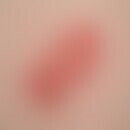DefinitionThis section has been translated automatically.
These belong to the bottom-living marine animals from the echinoderms (Echinodermata) strain. There are about 950 species of sea urchins. Their bodies are almost completely enclosed by a skeleton of limestone slabs and carry movable spines. Sea urchins are found in all the world's oceans, but especially on the coasts of Europe, Asia, Central America, Australia and the Pacific islands. The limestone plates of the skeleton are pierced and equipped with suction feet (ambulatory sacral feet). These are used to hold on to the prey, to move around, but also for breathing and sensory perception.
The echinoderms prefer to live on sandy or rocky ground. They often hide in small cavities or between stones, so that bathers easily overlook them and step on them.
ClinicThis section has been translated automatically.
In general, most sea urchins only cause injuries through their spines. The spines easily penetrate the skin, especially when stepped on, break off and remain stuck in the skin as they are barbed. They often crumble when you try to remove them. Some sea urchin species have toxins inside their spines that can cause burning and itching at the entry points. In very rare cases, systemic toxin reactions (urticaria, headaches, vomiting, diarrhea) are possible.
Spines that have penetrated the skin, e.g. in the sole of the foot or at other contact points, must be removed individually. Particularly deep-seated spines can only be removed microinvasively. Remaining spines cause local infections in the skin, as well as persistent foreign body granulomas, which may need to be surgically removed. This is particularly the case if they have penetrated joints (risk of stiffening).
Contact with the short spines of leathery sea urchins (Asthenosoma species) hardly leads to visible injuries, but is extremely painful, although the pain subsides after 30 minutes.
Injuries caused by the grasping pincers of poisonous sea urchins (Toxopneustes species) are also extremely painful, although the pain subsides after 30 minutes. In individual cases, symptoms of poisoning may occur.
Contact with the up to 6 cm long spines of the crown-of-thorns starfish (Acanthaster planci) can lead to extremely painful injuries. Remains of the spines can be visualized radiologically and must be removed surgically.
Caution: Primin-containing sea urchins: Possible allergic reactions, cross-reactions, see cup primrose
You might also be interested in
TherapyThis section has been translated automatically.
After prior disinfection of the skin, it is recommended to remove all sting remains that have penetrated the skin (often in laborious detail work) with pointed tweezers. Deeply penetrated spine tips may have to be removed surgically.
ProphylaxisThis section has been translated automatically.
It is highly recommended to wear bathing shoes in sea urchin-rich waters.
Case report(s)This section has been translated automatically.
- Stanger C (2015) Sea urchins. In: Traveler's dermatoses. E.v.Stebut ed. Springer Verlag Berlin-Heidelberg pp. 240-242
Montag A (2023) Plants and skin. Springer-Verlag GmbH. S. 817-820.
Incoming links (1)
Cup primrose;Disclaimer
Please ask your physician for a reliable diagnosis. This website is only meant as a reference.




